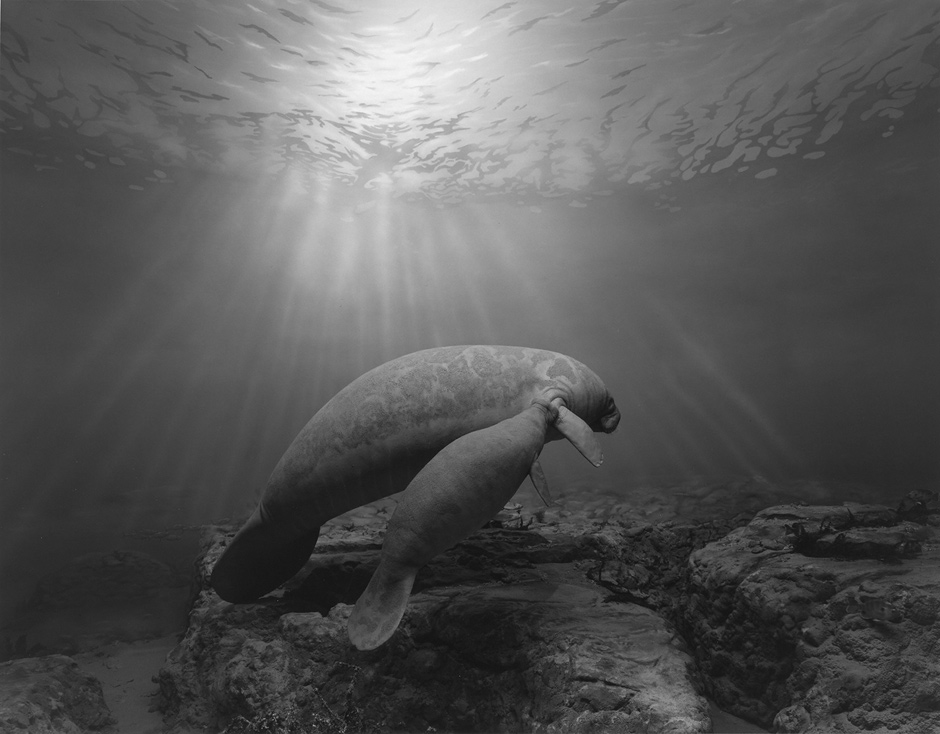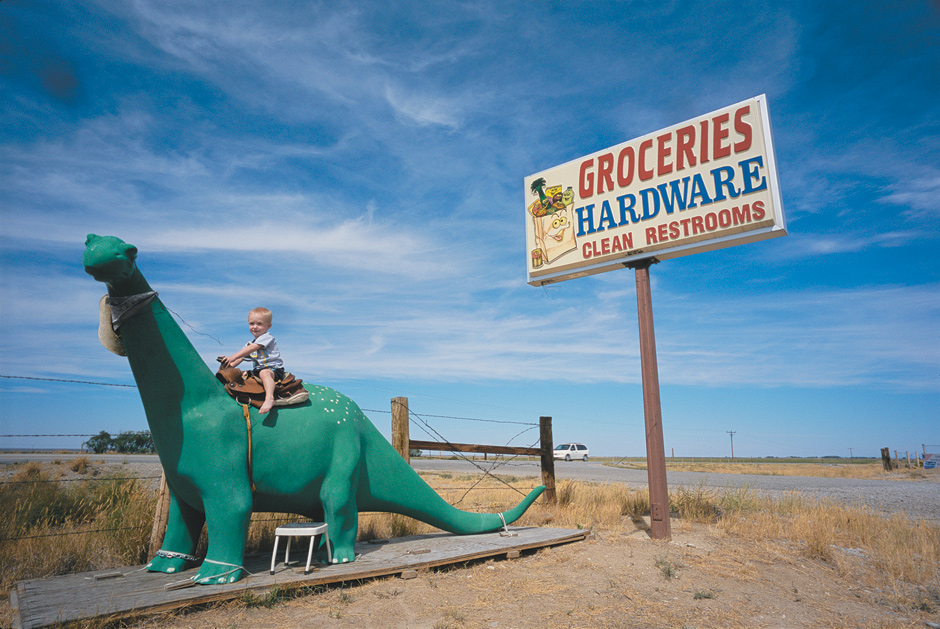The better we understand the earth’s natural systems, the more dynamic they appear to be. (The same could be said of the universe itself.) Two and a half centuries ago earth looked like a planet of remarkable fixity and a short time scale. Since then, of course, the past has deepened or widened or lengthened enormously, depending on how you think of it. The planetary time scale has expanded from several thousand years to some 4.5 billion years, and now we know that this one earth is really a seemingly endless succession of earths. Continents roam, climate changes, oceans warm and cool, species come and go.
The old idea of an earth with relatively static natural systems fit more than just the biblical evidence. It also fit the common sense of most observers. In a way, it still does. As Elizabeth Kolbert makes clear in her excellent new book, The Sixth Extinction: An Unnatural History, nothing about who we are or how we’ve evolved as a species makes it easy for us to perceive the depth of geological time, to feel it in our bones the way we feel the passing of the seasons. Common sense fails us often enough in the hours and days of ordinary life. It fails us completely on any time scale much longer than that. The extraordinary, deep-yawning present concealed in the earth’s past—the day-by-dayness of all those billions of years—constantly puts the lie to what our senses, common or otherwise, tell us. Historically speaking, we have walked around on one earth—the earth we believe we perceive—while unaware of another earth—shaped in geological time—beneath our feet. For billions of earthlings, “historically speaking” happens, unfortunately, to contain the present.
Nothing we do will ever change the speed at which tectonic plates shift and continents wander. But everything we do now shifts the speed at which other natural processes occur—natural processes that once shifted at roughly geological speed. The amount of carbon dioxide in the atmosphere (and the oceans) has changed again and again in earth’s history, but almost always at a rate imperceptible to humans. The same is true of the mix of species on this planet. Catastrophes apart, species haven’t become extinct very often. They disappear at a roughly measurable, roughly steady background rate.
The way we live now—and have lived for the past couple of centuries—has accelerated climate change and the extinction of species into a wholly different temporal dimension. The lifespan of a human being used to be an indiscernible increment in geological time—an immeasurably infinitesimal instant. Now, a human lifespan—measured by the accumulation of atmospheric carbon dioxide and the demise of species—takes place during genuinely geological changes. One way to talk about the Anthropocene—the geological age that begins with direct human influence over the earth’s natural systems—is to say that at last, tragically, geological time is all too observable.
Around the globe, species of every kind are dying out, silently, invisibly. At a very conservative estimate, they are dying out a thousand times faster than the rate of extinction before humans arose. At least half the tortoises and turtles, a third of the amphibians, a quarter of the mammals, and an eighth of the birds on this planet face a risk of extinction in the near future. What’s worse, these numbers apply only to the small fraction of known species whose conservation status has actually been assessed. The overall picture is likely to be much worse.
Nearly everyone goes about not noticing this. The reason is fairly obvious. In The Sixth Extinction, Kolbert quotes a paleontologist who is summarizing the likely risk of extinction caused by global warming. “Look around you,” he writes. “Kill half of what you see. Or if you’re feeling generous, just kill about a quarter of what you see. That’s what we could be talking about.” Now go to the window and look around you. If you live in or near a city, what do you see? Perhaps a pair of pigeons on the cornice of the building across the street, a Norway maple or a gingko, perhaps a tight cluster of small birds at the feeder, an expanse of grass, a dog, a cat, and people, plenty of people. For all but a small number of humans on this planet, extinction is occurring somewhere else, far offstage.
Nor is extinction something you can witness, even if you’re the zookeeper who, nearly a century ago, found Martha, the final passenger pigeon, dead in her enclosure at the Cincinnati Zoo. In human experience, extinction is an absence, a sudden gap in the world noticeable only to the extent that there’s a scientific record of the world as it existed before the gap occurred. (The fossil record is a different story.) Not a week passes without a new account of a species—or group of species—at risk of extinction, or a new paper investigating the forces behind the current rate of extinction, or a new study examining what happens to ecosystems when species go missing.1
Advertisement
Some species on the brink of vanishing, like the Sumatran rhino, are well known to scientists (and, in some cases, nonscientists too). But an untold number of unknown, undiscovered species are dying out too, never having left a trace of themselves in the awareness of humans. Scientists can estimate possible rates of extinction under different climatic models, but they can’t take into account the species that no one knows about. Again and again, scientists discover a new species that’s already threatened by poaching or deforestation at the moment of its discovery. It’s as if human attention were fatal.
The last time species died out as fast as they’re doing now was 65 million years ago, when an asteroid crashed into earth at a low angle, leaving an enormous crater near what is now the Yucatán and causing a long-lasting global winter. Think of Homo sapiens as that asteroid. No one knows precisely how many species are likely to die in this, the sixth major biological crisis in our planet’s history. And no one knows whether we’ll be able to prevent the rate of extinction from rising, never mind lowering it or stopping it altogether. Most important of all, no one knows what the cascading effects of these extinctions—the eventual loss of entire ecosystems, like coral reefs—are likely to be. Will Homo sapiens become extinct as the extinctions caused by our species mount up? No one knows.
Humans began erasing species in the late Pleistocene, which ended about twelve thousand years ago. The species that went down then were the big ones, megafauna like the American mastodon. Whenever I’ve tried to imagine this extinction, I find myself falling prey to the worst kinds of paleo-prejudices. I imagine small bands of early hunters moving rapaciously across the landscape, killing beasts many times their size with the indifference of buffalo hunters working the Great Plains in the 1870s. It looks, in my mind, like a museum diorama come to life but stuck on replay. Why, in their own self-interest, didn’t those early hunters moderate the rate at which they killed the big beasts?
This picture is chronologically simple-minded, of course, the way so many of our mental pictures of the past—and our effort to imagine the sheer extent of the past—tend to be. It took hundreds if not thousands of years to kill off the mammoths and the giant ground sloths, and because they reproduced so slowly, there needed to be nothing especially ravenous about the hunting in order to cause their extinction. To eliminate those creatures—the largest mammals to have lived on the planet—it would have taken only a kill here, a kill there, repeated over hundreds of years. “For the people involved in it,” Kolbert writes, “the decline of the megafauna would have been so slow as to be imperceptible.” The paleobiologist John Alroy sums it up with a chronological paradox that’s worth remembering: the megafauna extinction was a “geologically instantaneous ecological catastrophe too gradual to be perceived by the people who unleashed it.” Until just the past couple of decades, the same could be said of the ecological catastrophe we are causing: it was geologically instantaneous but too slow to be perceptible. Now that we perceive it, will it make a difference?
In The Road to Wigan Pier, George Orwell, having been down the pit in Lancashire, stops to think about the economic ubiquity of coal. Substitute the word “fossil fuel” for “coal” (itself a fossil fuel), and you have our predicament. “Practically everything we do,” Orwell wrote, “from eating an ice to crossing the Atlantic, from baking a loaf to writing a novel, involves the use of coal, directly or indirectly. For all the arts of peace, coal is needed; if war breaks out, it is needed all the more.”
But what Orwell is really talking about is awareness. “Coal has got to be forthcoming,” he writes, “but on the whole we are not aware of it.” And he points out, we prefer not to be aware of it or of the means and consequences of getting it. So it is with our economic lives now. It’s all too easy to think of extinction as a series of one-off events in the past, caused by unexpected catastrophe or the extraordinary folly of humans or, perhaps, the exceptional stupidity (i.e., tameness) of some creatures. The dinosaurs, the passenger pigeon, and the dodo come to mind.
Advertisement
There are many different immediate causes for the different extinctions occurring now—deforestation, destruction and fragmentation of habitat, rising temperatures, increasing acidity in the oceans, the feverish global traffic that has helped spread chytrid fungi around the world, destroying amphibian populations wherever it’s found. But all these causes can be resolved into one: the ordinary, daily economic activity of our species at this point in its history. As Kolbert notes, to understand extinction, you don’t have to imagine a poacher killing elephants with an AK-47. “You can picture yourself, holding a book on your lap.”
When I first read The Sixth Extinction, I thought there was a chapter missing. It might have been called “Why We Should Care.” In fact, Kolbert has compressed that chapter into two sentences. “It doesn’t much matter whether people care or don’t care,” she writes. “What matters is that people change the world.” (There’s a slight ambiguity in that second sentence, which may sound as though Kolbert is saying that people should change the world. That’s not what she means.) Caring and not caring don’t alter the gross systemic changes that are forcing extinctions—the rapid pumping of carbon dioxide into the atmosphere and its absorption by the oceans. Caring and not caring are merely indiscernible emotional effluents emitted by the dominant species on this planet. How much we care or don’t care about the well-being of other species is overwhelmed—utterly engulfed—by how much we care about ourselves. There’s a really good reason for not writing that chapter.

Hiroshi Sugimoto/J. Paul Getty Museum
Hiroshi Sugimoto: Manatee, 1994; from the exhibition ‘Hiroshi Sugimoto: Past Tense,’ which includes his photographs of habitat dioramas, wax portraits, and early photographic negatives. It is on view at the J. Paul Getty Museum, Los Angeles, February 4–June 8, 2014.
So far, nearly all the arguments for caring about the loss of other species boil down to caring about the welfare of our own. There’s the biophilia argument of E.O. Wilson, which emphasizes the biotic richness of the world we evolved in—and worries about the many possible consequences of losing that richness. There’s the ecosystem services argument, which proposes that nature is a sort of service economy dedicated to providing tolerable weather, edible food, drinkable water, and breathable air for humans. There’s the unintended consequences argument, best summed up by a scientist commenting on a new study of the serious, unexpected effects of overfishing: “You don’t understand how interdependent species are until it all unravels.” Take the idea of interdependence far enough and you get the Gaia argument, the hypothesis that earth is a single living organism. Many believe, more or less, that we’re interdependent with other species, though we behave as if we’re not.
These arguments tend to converge, naturally enough. But one argument is nearly always shunted aside, shelved under the heading of religion. I’d put it this way. Every species that has ever existed on this planet is or was a successful experiment in living. Existence is the only measure of success, not pervasiveness or ubiquity or intelligence. Unsuccess would be nothingness. No species is more valuable or meaningful than another, except in the minds of humans, where the balls and strikes are called. The shorthand for one version of this argument is that all life is sacred. But there’s something inadequate about that way of putting it. It seems to shift categories in midstream, because saying that life is sacred usually implies a sacred being to warrant the sacredness of all life. Humans love the idea of the sacredness of all life, as long as it applies chiefly to humans and as long as we ignore all the ways we’ve demonstrated, historically, that life—even human life—isn’t sacred at all.
Nature too demonstrates that life isn’t sacred, not for the individual or the species. Every species has some effect on the species it interacts with, for better or worse. Nature itself, since Darwin, looks essentially amoral, like a struggle for existence, for shelf space on this planet. And yet the amorality of what we call nature is also completely consistent with the interdependence, the coexistence, and the profusion of all species and of life itself. The morality of humans isn’t. Neither, of course, is our amorality.
That is the measure of our failing, our biotic indecency. The general tendency of our species—a tendency that seems to be intensifying all the time—is to decrease biological diversity on this planet. We do so by destroying habitats, overconsuming natural resources, and spreading invasive species, willingly or not. It’s tempting to say that this is the cost of consciousness. We like to imagine that cultural diversity is an adequate substitute for biological diversity—for ourselves, if not for other species. It isn’t.
Kolbert is right. Whether you care or not is immaterial. The question is this: Have we arrived at this point because of something inherent in our nature? Or has something peculiar in our circumstances brought us here, something we can still hope to alter?
The Sixth Extinction is the kind of book that helps us recognize the actual planet we live upon, apart from the planet of our daily walking dreams. Kolbert notes, for instance, that biologists now talk about the “new Pangaea” to describe the effects of global travel and the rapid dispersal of species. The old Pangaea was a kind of ur-continent—all our present continents huddled together as one—that existed some 300 million years ago. As the continents drifted into their present positions, Pangaea slowly broke apart, causing a divergence among species as new barriers arose and they became separated from each other. Part of what constituted the apparent common-sense stability of earth several hundred years ago was the fact that no species could move far very quickly under its own power. But species no longer need to move only under their own power. We carry them about the world with us, on planes, in the bilges of ships, unintentionally, on purpose, in business and in pleasure. It’s as though the continents have reconverged, reconstituting Pangaea. As Kolbert puts it, “humans are running geologic history backward and at high speed.”
And as Kolbert notes, we’re also “deciding, without quite meaning to, which evolutionary pathways will remain open and which will forever be closed. No other creature has ever managed this, and it will, unfortunately, be our most enduring legacy.” This is the kind of point that’s easy to miss. As species begin to go down in our presence, we’re not only altering earthly existence now. We’re also altering the very potential for earthly existence. Among all the determinants that govern evolution, we have emerged as the only superdeterminant.
The precondition for this lamentable state of affairs is the status quo. The way we live now has allowed us, until now, to entertain the illusion that we’re technologically invulnerable to nature. But the state of our apparent invulnerability depends on the state of our social and economic stability, which is the very thing most threatened by the changes our way of life is bringing about through climate change. As one teeters, so does the other. This is an old lesson. But we seem to be as immune to the past as we are oblivious to the present. All the old tales of cultures that have failed through long droughts and successive years of unseasonable cold sound like outmoded fables about a time when houses were built of straw. Even a book as eloquent and vivid as Global Crisis, Geoffrey Parker’s recent study of “War, Climate Change and Catastrophe in the Seventeenth Century,”2 seems to pale a little when set against the news that farmers, globally, harvested a bumper crop last year. But then we produced, globally, a bumper crop of people last year too.
Near the end of her previous book, Field Notes from a Catastrophe, Elizabeth Kolbert wrote, “It may seem impossible to imagine that a technologically advanced society could choose, in essence, to destroy itself, but that is what we are now in the process of doing.” She is talking about pouring carbon dioxide into the atmosphere. It may also seem impossible that an advanced society could choose to destroy other species and go on destroying them without regard to the consequences and without regard to the validity of every life form on this planet. To paraphrase Orwell, it raises in you a momentary doubt about our status as an advanced society. Or perhaps a doubt not so momentary after all.




